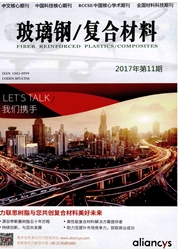

 中文摘要:
中文摘要:
结合压缩薄膜效应对GFRP筋混凝土桥面板进行结构设计,有效降低了桥面板的配筋率,降低了结构的建造成本。以支撑梁宽度、筋材种类、配筋率为参数,对1:3比例缩小的梁板式桥面板进行静力加载试验,测量各个结构模型在整个加载过程中各阶段的承载力、应变、变形等数据,考察其基本力学性能。分析研究桥面板在轮胎荷载下,支撑梁变形、桥面板的裂缝扩展扣破坏形态,清晰揭示压缩薄膜效应在整个受力过程中的变化以及对结构性能的影响。
 英文摘要:
英文摘要:
With the consideration of compressive membrane action (CMA) in the structural design of concrete bridge deck slabs reinforced with GFRP bars, the reinforcement percentages and construction costs could be decreased. Therefore, a series of one-third scaled experimental tests of GFRP reinforced concrete bridge deck slabs under static patch loads was carried out. In the experimental study, the influences from some structural variables were investigated, which included widths of supporting beams, reinforcing materials and reinforcement percentages. In this study, some structural parameters, such as loading capacity, stress&strain relationship, cracking patterns, were measured and observed in the different stages. The structural behaviours of GFRP reinforced concrete bridge deck slabs were discussed, including displacements of supporting beams, cracking patterns and failure mechanism. The results were used to study the effects of CMA and influenced from this structural phenomenon on structures. In this study, it was found that the increase in lateral restraint stiffness could enhance load-carrying capacities signifi- cantly. However, the effects of reinforcement percentages were not obvious. Furthermore, current design standards underestimate the load-carrying capacities without consideration of CMA.
 同期刊论文项目
同期刊论文项目
 同项目期刊论文
同项目期刊论文
 期刊信息
期刊信息
